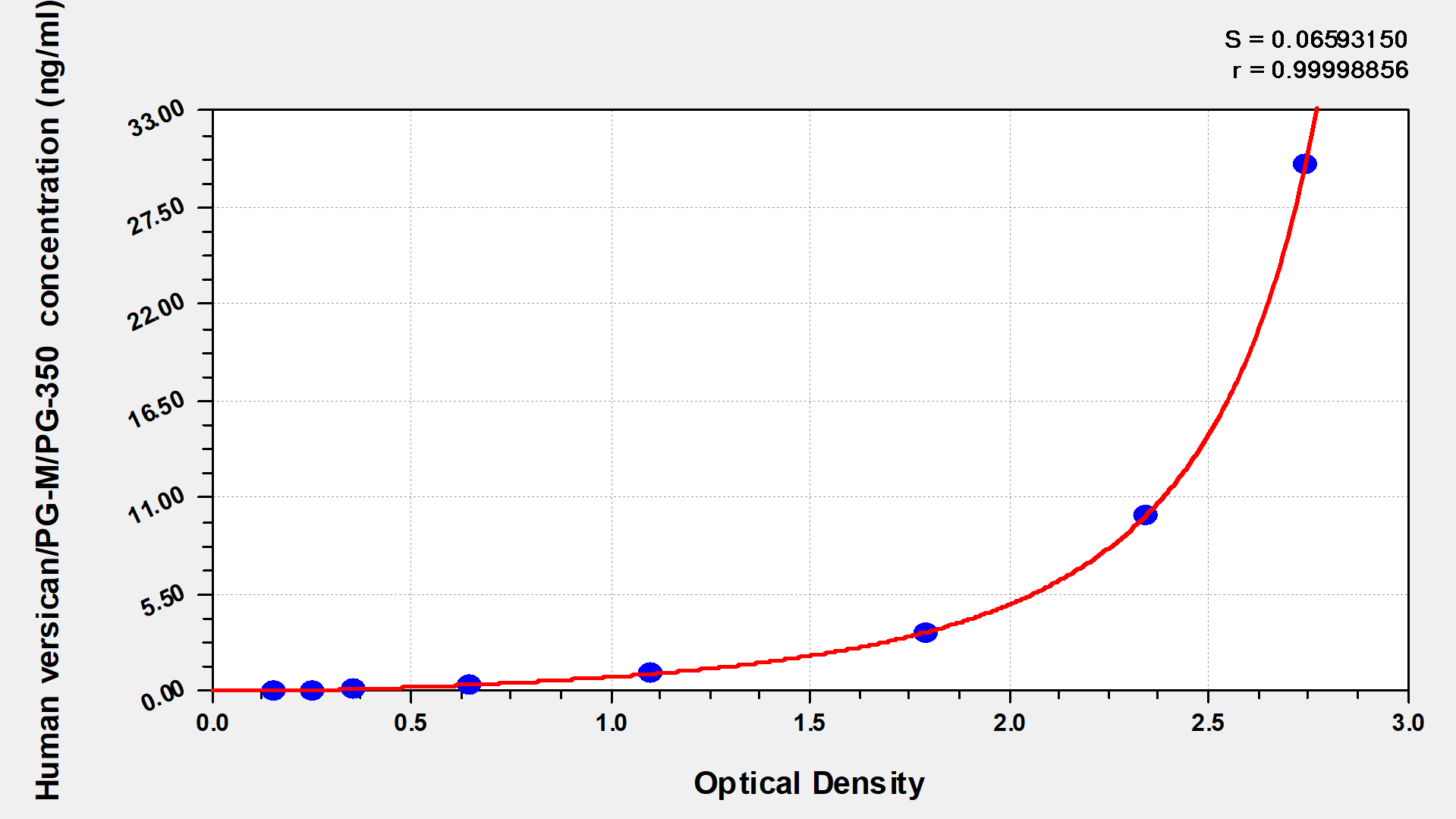The human VCAN ELISA kit (CSB-E11884h) is designed for the quantitative measurement of human VCAN protein in samples. It shows excellent specificity for human VCAN. It uses the bi-antibody sandwich enzyme immunoassay technique. This assay employs a biotin-conjugated VCAN antibody that recognizes the analyte bound by the immobilized VCAN antibody, forming an antibody-analyte-antibody complex. The immune complex is further detected by avidin-conjugated HRP. The TMB solution is added into the wells and turns blue and finally turns yellow after the addition of the stop solution. Solution color develops in proportion to the amount of VCAN in the sample. The O.D. value is measured using a microplate reader at 450 nm and is used to determine the concentration of the human VCAN in the sample.
VCAN is a large extracellular matrix (ECM) proteoglycan that is significantly increased expressed and accumulated during inflammation in most diseases. It plays an essential role during development and is an important component of tissue inflammation caused by infection and tissue injury. VCAN interacts with its receptors such as CD44, PSGL-1, and TLR2, initiating a signaling cascade that affects the phenotypes of immune and inflammatory cells. It is also implicated in multiple processes of cancer development, including proliferative signaling, evasion of growth-suppressor pathways, modulation of cell death, promotion of neoangiogenesis, and tissue invasion & metastasis.




